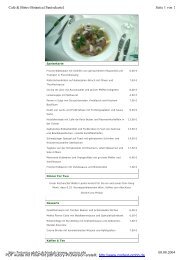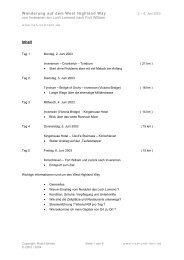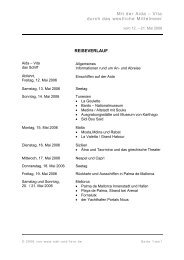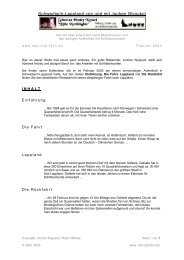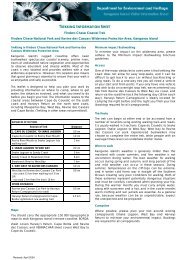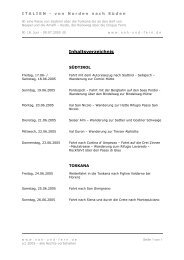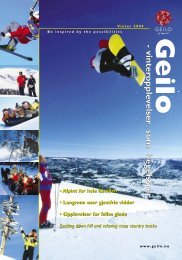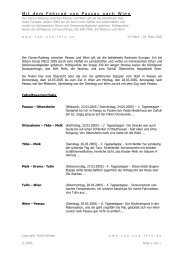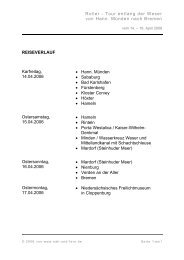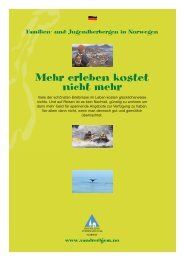Kakadu National Park Visitor Guide and Maps - Free
Kakadu National Park Visitor Guide and Maps - Free
Kakadu National Park Visitor Guide and Maps - Free
Create successful ePaper yourself
Turn your PDF publications into a flip-book with our unique Google optimized e-Paper software.
The role of fireFire has a major influence on the Australian environment <strong>and</strong> has shaped many ofthe plant communities we see today.Traditional burningFire has been an important part of Aboriginal life for thous<strong>and</strong>s of years. It wasused to signal others <strong>and</strong> is still used for cooking, to make hunting easier, toattract animals, to protect foods such as yams <strong>and</strong> to 'clean the country' before thehot dry weather comes.This earth, I never damage.I look after. Fire is nothing, just clean up.When you burn, new grass coming up.That means good animal soon,might be goanna, possum, wallaby.Burn him off, new grass coming up, new life all over.Bill Neidjie - Bunitj clan.Aboriginal traditional owner.Changes to traditional burningFires lit by Bininj/Mungguy as theytravelled to different parts of thecountry created a patchwork ofburnt <strong>and</strong> unburnt areas. With thearrival of non-Aboriginal people,the Bininj/Mungguy populationdecreased. Many people died ofdisease, others moved off theirl<strong>and</strong> to towns <strong>and</strong> settlements.With fewer people on the l<strong>and</strong>, lessburning was carried out, so hot, latedry season wildfires became morecommon. These hot fires were oftenlarge <strong>and</strong> destructive, changing thedistribution of plants <strong>and</strong> animals.Planned burningSince the 1980s, Bininj/Mungguy<strong>and</strong> park managers have workedtogether to reduce the number of hotfires at the end of the dry season.Burning around p<strong>and</strong>anus palms.Most burning takes place in the early dry season (May to July) when conditionsare relatively cool. These fires are generally of low intensity, <strong>and</strong> of little risk tohumans <strong>and</strong> most animals. Damp areas, left over from the wet season, help tobreak up fires <strong>and</strong> create a patchwork pattern of burnt <strong>and</strong> unburnt areas.Although late dry season fires (September to November) are generally avoided,some floodplain burning, often by Bininj/Mungguy hunting goannas <strong>and</strong> turtles,does occur. Fires are also lit by lightning strikes at this time of the year. Wet seasonburning is used to reduce the amount of flammable spear grass (Sorghum spp)before the dry season.Reducing the risk of wildfires©Alderson,Gangali<strong>and</strong> Haynes (1979)The Gundjeihmi Aboriginal Calendar shows lighting fires is part of the yearly cycle.Please help prevent wildfires. Make sure your cigarette butts <strong>and</strong> matches areout <strong>and</strong> put them in rubbish bins, not on the ground. Clear the area around yourcampfire <strong>and</strong> put it out before you leave.Fire as part of our environmentUsing fire wisely, for the right purposes at the right time, will ensure Australia’sunique environment is maintained for present <strong>and</strong> future generations.1011



